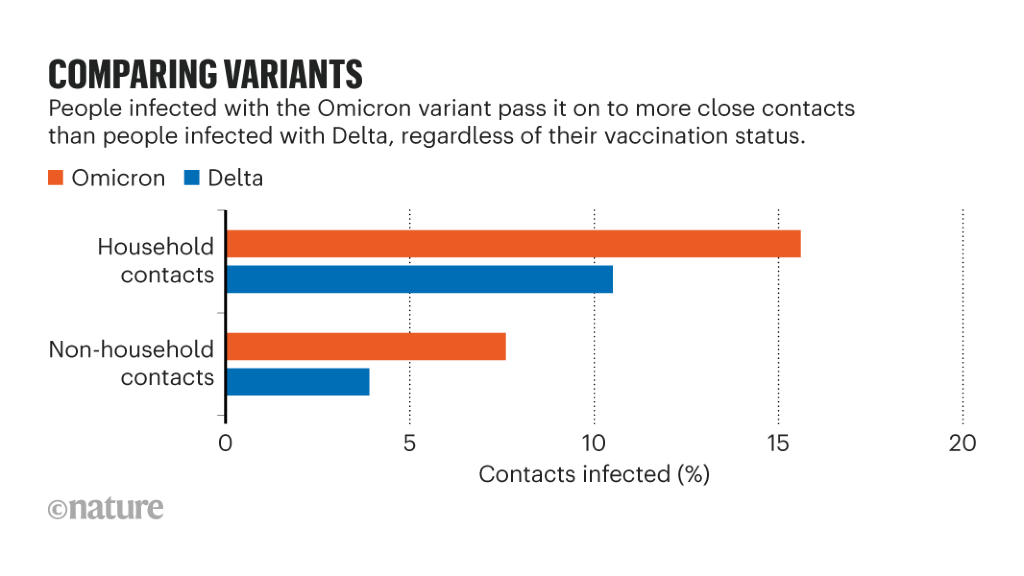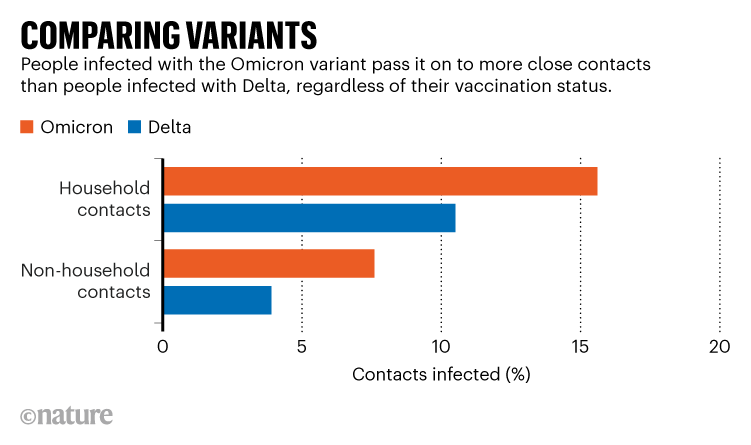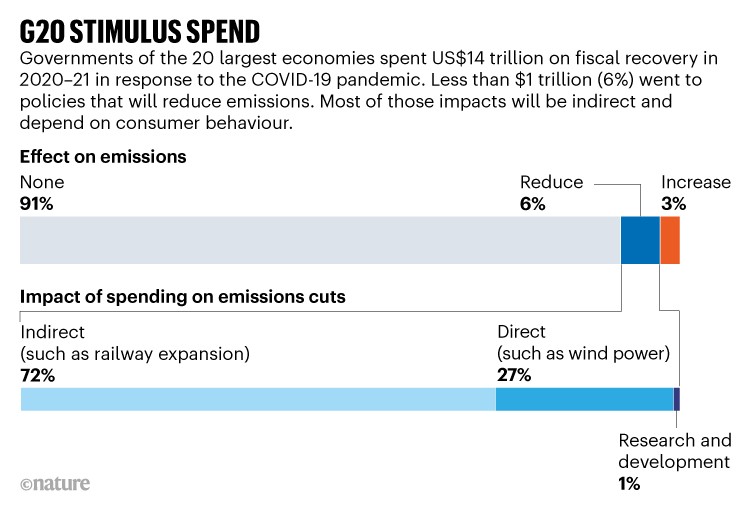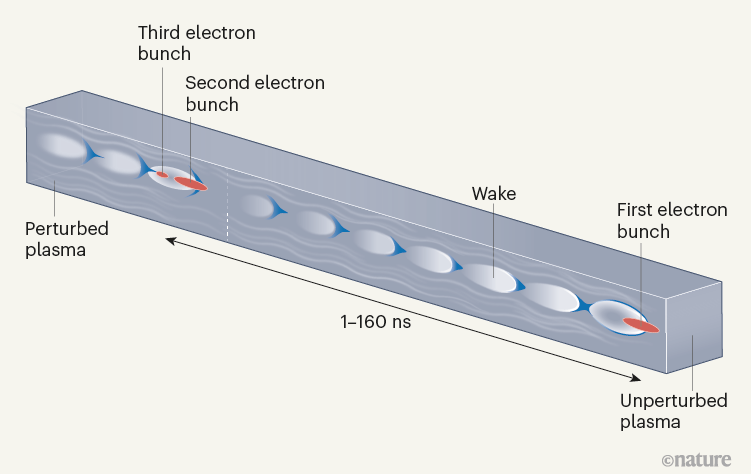Omicron versus Delta
A rigorous analysis has revealed how the Omicron variant of the coronavirus SARS-CoV-2 overtook the Delta variant. Data have been mounting on Omicron’s ability to evade vaccines, but the study, posted as a preprint and not yet peer-reviewed, looks at how fast it spreads in even vaccinated people (H. Allen et al. Preprint at medRxiv https://doi.org/hj3m; 2022).
This chart shows that whereas people infected with Delta spread the infection to roughly 11% of their household members, those who had Omicron spread it to almost 16%. That means there is a 48% increased risk of passing on the virus when infected with Omicron compared with Delta. This, and another two charts, help to explain how Omicron infections are racing around the world.
Broken promises to build back greener
Governments are spending vast amounts to help countries to recover from the COVID-19 pandemic. In 2020 and 2021, the G20 group of the 20 largest economies spent at least US$14 trillion on stimulus funding. Many have made commitments to build back better and greener, with the aim of ensuring that spending would help cut carbon emissions.
A striking analysis of spending shows that these promises have not been met, however — as this chart shows. The authors found that only 6% of total stimulus spending has been allocated to areas that will also cut emissions, such as installing renewable technologies. Even worse, almost 3% of stimulus funding has targeted activities that are likely to increase global emissions, such as subsidizing the coal industry.
Advancing particle accelerators
Our third graphic shows how scientists are developing more advanced particle accelerators, used in high-energy physics. Conventional particle accelerators are expensive and unwieldy, needing up to one kilometre of space under Earth’s surface. A smaller, cheaper accelerator based on plasma (ionized gas) might be capable of doing the job.
Plasma wakefield accelerators are currently being developed as one alternative. In these devices, an electron bunch excites a density wave in a plasma, and the wave’s wake is used to accelerate a second electron bunch to high energy. The wake varies from high electron density (blue) to low density (white). A paper published in Nature (R. D’Arcy et al. Nature 603, 58–62; 2022) measured the recovery time of a plasma, which sets an upper limit on the rate at which bunches can be sent through the device.
The authors sent a dense, high-energy electron bunch into an unperturbed plasma and, after a delay time of 1–160 nanoseconds, sent two more electron bunches into the same source, separated by hundreds of femtoseconds. The first bunch excited the plasma and the second bunch created a plasma wake in which the third bunch was accelerated. The authors concluded that the plasma recovery time was about 63 ns — corresponding to a repetition rate of around 10 megahertz, which readily meets the demands of future applications. Our News & Views article explains in more detail.








More News
A vision chip with complementary pathways for open-world sensing – Nature
Who owns your voice? Scarlett Johansson OpenAI complaint raises questions
Van der Waals polarity-engineered 3D integration of 2D complementary logic – Nature